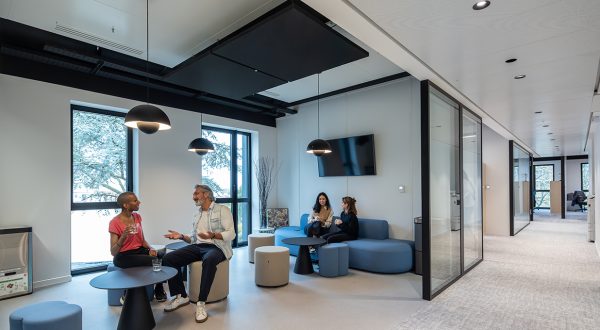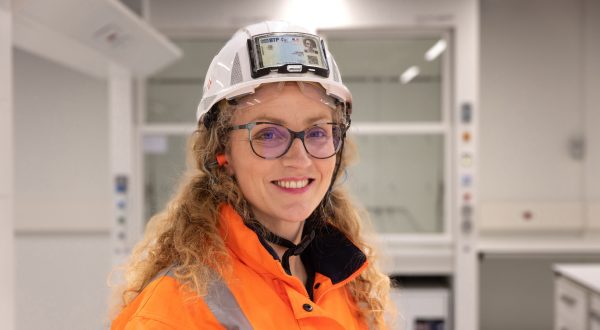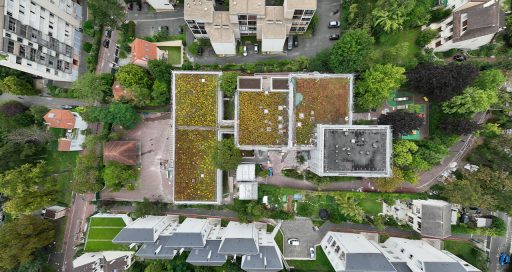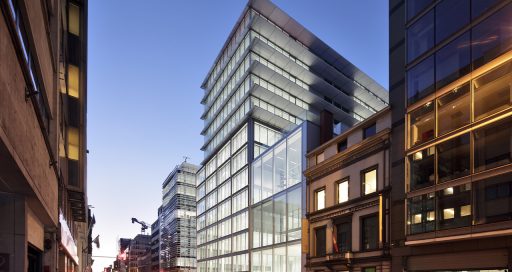The next step in smart building development after BIM? BOS!
Reading time: 5 min
![]()
Next-generation buildings feature more and more digital applications, but struggle to make them communicate with each other. That’s where BOS (Building Operating System) comes in – a solution linked to BIM (Building Information Modelling).
If the place it actually occupies in the urban landscape was to be measured against the media coverage it receives, then the smart building would today represent a new benchmark in the construction and maintenance market in this sector. There’s no doubt that it’s a growing industry.
“Smart buildings, in other words buildings that incorporate automated systems and offer a range of services for owners, occupants and operators, first took root in commercial office buildings but are now entering other parts of the property market such as hospitals, supermarkets and museums. What’s more, they are being rolled out very quickly, across the whole country,” says Aymeric Tissandier, engineering & works director for building solutions at VINCI Energies.
But as this first generation of smart buildings spreads, it is starting to show its limitations. The stumbling block is the same everywhere: poor data accessibility and management. It’s precisely this building and occupant-generated data that is supposed to differentiate smart buildings from older structures. “In its current form, the smart building has not yet been able to deliver on its promises,” says Houda Matta, smart building manager at VINCI Energies.
While the increasing number of applications using and generating large volumes of heterogeneous data adds a layer of complexity, the main issue to be resolved before smart buildings can become mainstream is the capacity of the players involved to overcome their “silo” mentality and to find a way for buildings to function intelligently at the operational stage.
Operating system
In this, the market has a valuable ally: the Building Operating System. BOS is a central software platform that enables “business verticals”, traditionally compartmentalised at all levels of building infrastructure and use, to communicate with each other.
“The purpose of BOS is to transform buildings into a scalable digital platform that offers services with real added value.”
“The purpose of BOS is to transform buildings into a scalable digital platform that offers services with real added value. It is key to the smart building’s service-based value proposition,” stresses Philippe Conus, building solutions director at VINCI Energies.
Its innovative power is based on three things: visualisation, openness, and scalability. Directly linked to Building Information Modelling (BIM), this Building Operating System provides graphical, intuitive access to data.
Each of the building’s automated functions is positioned in the right place in a 3D representation. This means lighting fixture X in office Y at the end of a corridor on floor Z can be immediately identified and serviced remotely, in real time.
“This spatial qualification of raw data requires all players to have previously agreed to share standards. Whether infrastructure, computerised maintenance management systems (CMMS), BIM, building management systems (BMS), IoT or, by means of a trickle-down effect, service applications more specifically aimed at building users, all of these functional building blocks must speak a common language,” explains Aymeric Tissandier.
New ways of working
Throughout its lifecycle, a building will collect data generated by its occupants. In this respect, the Building Operating System plays the role of translator to facilitate the interpretation, analysis, and correction in real time of user services (room reservations, lighting, temperature, air quality, connectivity, dialogue with applications outside the building, etc.). It ensures that updates are made over time, thus protecting the smart building from obsolescence.
In short, BOS acts as an open, dynamic database that can be modified in real time, connecting BIM data with other sources of building data.
“BOS will introduce new ways of working to our operations,” adds Philippe Conus, building solutions director. “To design and implement buildings equipped with self-learning and consequently scalable services, we will need to integrate new areas of expertise in network architecture, data interpretation, management, maintenance, and cybersecurity for infrastructure.”
Furthermore, the VINCI group intends to play a pioneering role in this through its future head office in Nanterre (to the west of Paris), which is due for delivery in 2021. “Archipel”, which is set to be fully designed, built, and managed using a digital approach, will be the first large-scale, real site to run BOS at full throttle.
12/09/2019





